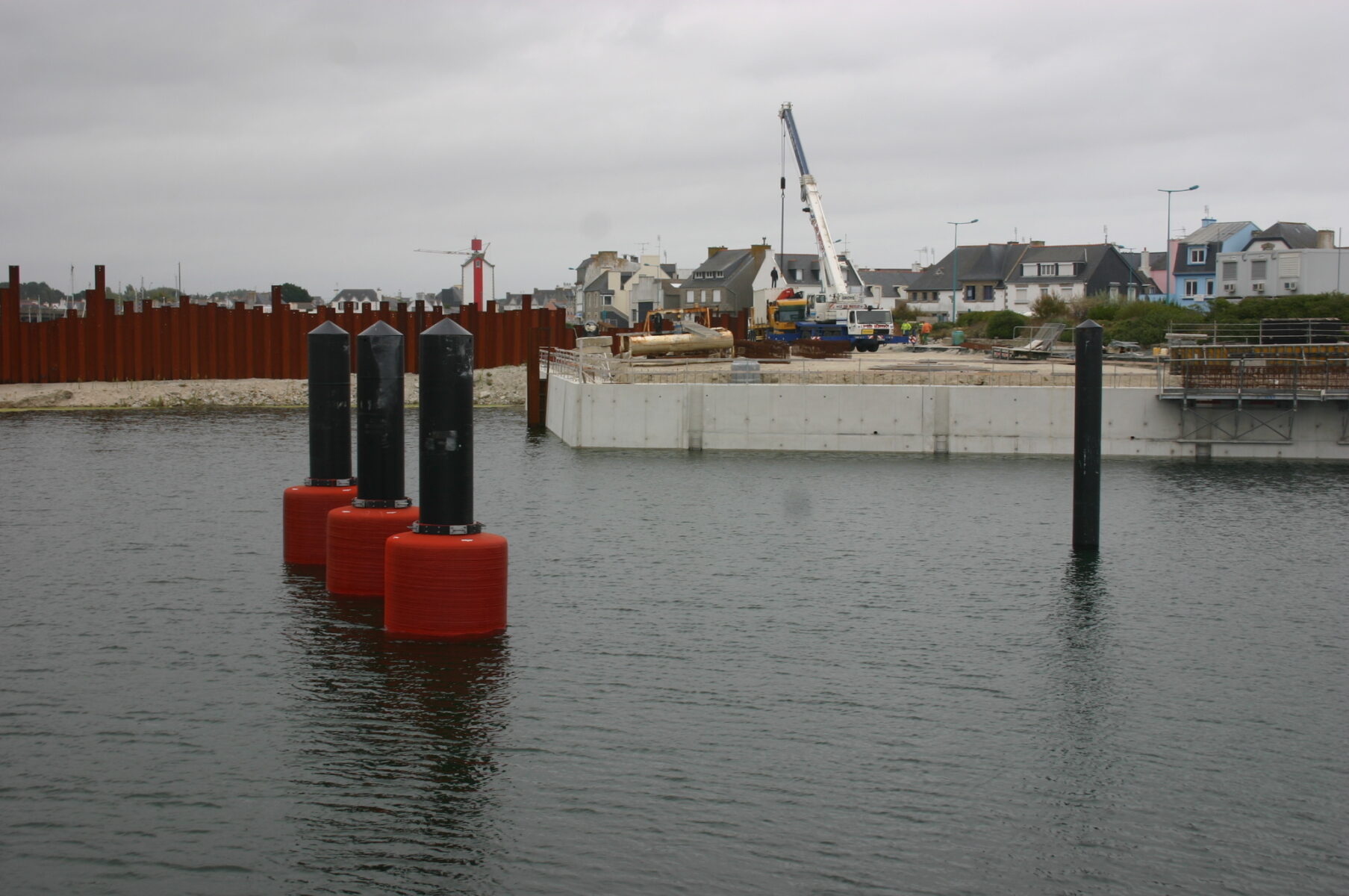This type of defense is specifically installed on :
- Dry dock entrances,
- Corner protectors,
- Rotating structures,
- Port entrance pontoons,
• Bridge protection,
- Single or multiple donut fenders are typically used to protect exposed sharp corners of berths
- If the vessel moves forward or backwards against the fenders, the fenders will reduce friction and shear forces. They can be a cost-effective solution for RORO docking points
- Ships approaching a lock or drydock must practice alignment, donut fenders help guide ships through narrow entrances
An alternative solution to the fenders installed directly on the quay, the rotating “donut” type fenders are fitted to the pile.
They are made from a metal guide ring, sized to the diameter of the pile, and installed with rotation guidance by a HDPE pad.
Donut fenders move up and down along the pile depending on the tide. Therefore, the design must consider several cases in order to achieve the desired performance at all times. Each of the variables listed below will have impact on the performance of defenses.
- Foam density
- Inside & outside diameter of the donut
- Donut height
- Tidal range
- Pile diameter and wall thickness
- Length of the pile from the point of fixation
- Loss of pile thickness over time due to corrosion
3D screenshot of donut fender – ETHM V200026MO
The most frequent diameters vary from 1270 to 4220 mm
The fenders have a core of closed cell physical reticulated polyolefin foam, at a density proposed according to the level of energy to be dissipated.
The sprayed Nibraprène R ES40D coating is produced without solvent, respectful of the environment, securing dimensional stability over time of the fenders while improving the resistance qualities. It is reinforced with high strength polyester fabrics, the dope-dyed color is defined by customer’s requirements.
